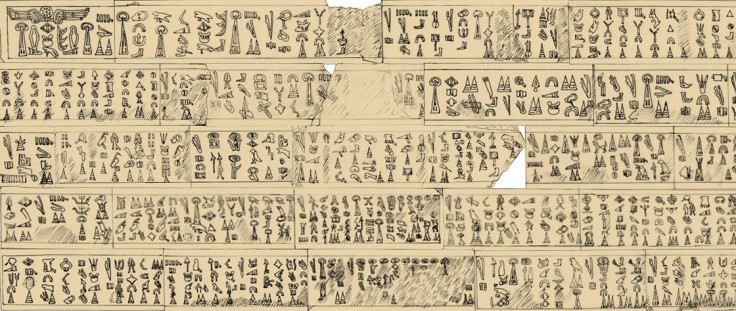Ancient hieroglyphs reveal answers to Bronze Age archaeological mystery
New documents shed light on the 3000 year-old mystery of the "sea people".

The unearthing of a series of ancient hieroglyphs has finally shone light on a mystery from the end of the Bronze Age.
For millennia, people have not known much about the so-called "sea people" who invaded advanced civilisations in the eastern Mediterranean, ending the Bronze Age.
According to the Luwian Studies organisation, a team of Swiss and Dutch archaeologists has unearthed 29-metres worth of Luwian hieroglyphs describing the event at the end of the age.
The hieroglyphs came from an original limestone frieze which had stood just 35cm tall.
That frieze was discovered in 1878 in the village of Beykoy, Turkey. After peasants found the stones, French archaeologist Georges Perrot copied the inscription before the villagers used the stones as building material for a new mosque.
The hieroglyphs themselves have only been decipherable since around 1950 when a team of Turkish and American researchers was set up to translate the ancient texts.
After constant delays, the researchers had all died out and the work left unpublished. Copies of the inscriptions resurfaced in the estate of English prehistorian James Mellaart in 2012 and were handed to the Luwian foundation.
The inscription is set to be included in a book published later this year in German by Eberhard Zangger. According to Zangger, the Luwian society says, the inscription was commissioned by the king of a late Bronze Age state called Mira. Around 1190 BC, the king, Kupanta-Kurunta, ordered his armies to attack the Hittites in the east.
The inscriptions put the Luwain armies, led by four princes, as major contributors to the 'sea peoples' invasions as "the united forces of western Asia Minor" invaded coastal cities and advanced all the way to the borders of ancient Egypt.







